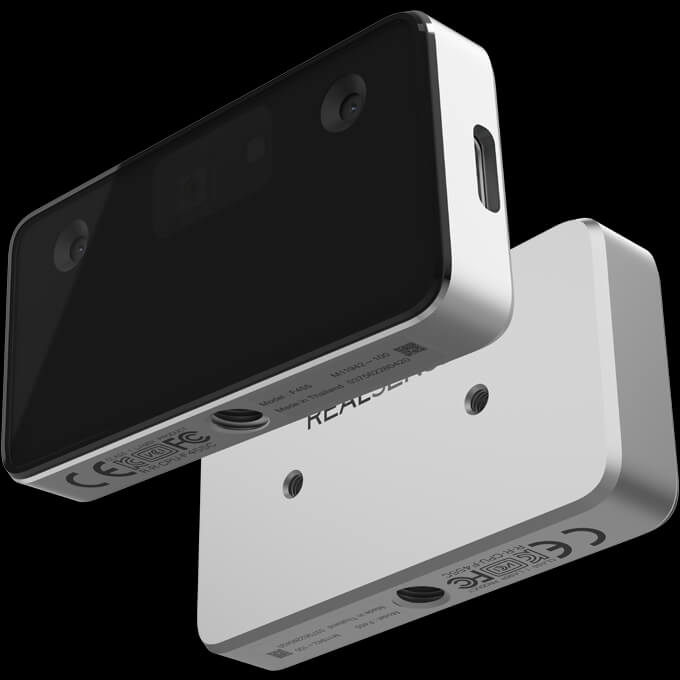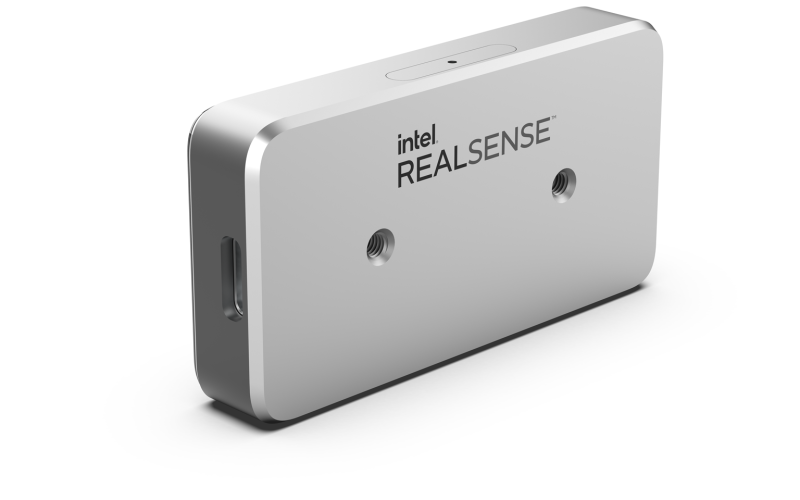The Intel RealSense Q1 Facial Authentication Device is a facial recognition system developed by Intel. It uses 3D depth sensing technology to capture and analyze a person’s unique facial features, allowing for secure and accurate facial authentication. The device can be integrated into a variety of applications, such as laptops, tablets, and smartphones, and is designed to work in a variety of lighting conditions and environments. The RealSense Q1 also includes liveness detection to ensure that the person being authenticated is a live human, rather than a photograph or video. It also features anti-spoofing technology to prevent attempts to bypass the system using photographs or masks.
How Does RealSense ID Work?
RealSense ID uses a combination of hardware and software to capture and analyze a person’s unique facial features for authentication. The hardware component of the system includes a depth sensor, an infrared (IR) camera, and an active IR illuminator.

The depth sensor captures a 3D image of a person’s face, which is then analyzed by the RealSense ID software. The software uses deep learning algorithms to extract unique facial features, such as the distance between the eyes, nose, and ears, and the shape of the jawline. These features are then compared to a stored reference image of the person’s face, and if they match, the person is authenticated.
The IR camera and illuminator work together to capture a “thermal image” of a person’s face, which is used for liveness detection. Liveness detection is a security measure that ensures the person being authenticated is a live human and not a photograph or video. The thermal image captures the unique heat patterns of a person’s face, which are very difficult to replicate or spoof.
The RealSense ID also includes anti-spoofing technology to prevent attempts to bypass the system using photographs or masks. It can detect subtle movements, such as blinking, and check if the person is wearing a mask or not.
Once the person is authenticated, the system sends a signal to the device or application to which it is connected, allowing the person access.
Features
The Intel RealSense ID facial authentication device has several features that make it a powerful and secure solution for facial recognition:
3D depth sensing technology: Captures a 3D image of a person’s face, which allows for more accurate and secure facial recognition.
Liveness detection: Ensures that the person being authenticated is a live human, and not a photograph or video.
Anti-spoofing technology: Prevents attempts to bypass the system using photographs or masks.
Deep learning algorithms: Extracts unique facial features and compares them to a stored reference image for authentication.
Fast and accurate: RealSense ID can authenticate a user in under a second with an accuracy of 99.7%
Adaptive and flexible: RealSense ID can work with different lighting conditions and environments, and it can be integrated into a variety of devices and applications.
Privacy-by-design: RealSense ID is designed to protect user privacy by keeping facial data on the device and not sending it to the cloud.
Easy to use: The RealSense ID is easy to set up and use, and it can be integrated into existing systems with minimal changes.
Offline authentication: The RealSense ID can authenticate a user even if there is no internet connection.
SDK: Intel has provided a software development kit (SDK) for RealSense ID, which allows developers to easily integrate the device into their own applications.
Conclusion
In conclusion, the Intel RealSense Q1 Facial Authentication Device is a powerful and secure solution for facial recognition. It uses 3D depth sensing technology, liveness detection, and anti-spoofing technology to ensure accurate and secure authentication. The device is also adaptable to different lighting conditions and environments and can be integrated into a variety of devices and applications.
The RealSense ID uses deep learning algorithms to extract unique facial features and compares them to a stored reference image for authentication. Additionally, it is designed with privacy in mind and has offline authentication capabilities. With its fast, accurate, and easy-to-use features, The RealSense ID is a promising solution for various applications and industries.
FAQS
How does RealSense ID work?
RealSense ID uses a combination of hardware and software to capture and analyze a person’s unique facial features for authentication. The hardware component of the system includes a depth sensor, an infrared (IR) camera, and an active IR illuminator.
What is the accuracy of RealSense ID?
The RealSense ID has an accuracy rate of 99.7%.
Can RealSense ID be used in different lighting conditions and environments?
Yes, RealSense ID is designed to work in a variety of lighting conditions and environments.
Does RealSense ID work with masks?
Yes, RealSense ID includes anti-spoofing technology to prevent attempts to bypass the system using photographs or masks.
Is facial data stored on the device or sent to the cloud?
RealSense ID is designed to protect user privacy by keeping facial data on the device and not sending it to the cloud.
Is there a software development kit (SDK) available for RealSense ID?
Yes, Intel has provided a software development kit (SDK) for RealSense ID, which allows developers to easily integrate the device into their own applications.
Does RealSense ID support offline authentication?
Yes, RealSense ID can authenticate a user even if there is no internet connection.






